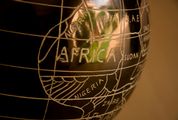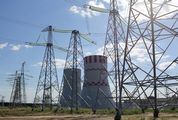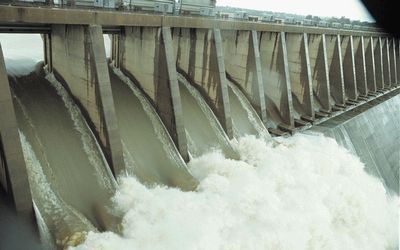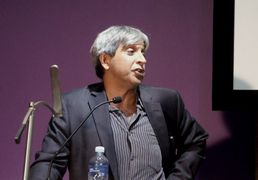A DRIVE down the N3 from Gauteng towards the Drakensberg offers useful lessons on the economics and politics of water management.
In economics, an important distinction is made between stocks and flows, wealth and income. A large bank balance is nice to have, but if not replenished or used to generate income, it will run out. So, most politicians approach nationalisation with circumspection. They realise that if the state takes wealth but cannot manage it, income will soon dry up. That’s a good reason to focus on policies that encourage the use of the nation’s wealth to produce goods, services and incomes. Generate (and save) income and there will be more wealth to share.
Political science deals with a different kind of capital. Individuals and parties that demonstrate achievement or mobilise their forces to gain positions of power effectively build political capital. They can use that capital in more or less productive ways. It can be dispersed through patronage to maintain power or to produce benefits for a wider group of interests. Used unwisely, political capital can slip away rapidly, leaving its holders poorer and weaker, if wiser. But, at the current juncture, the less said about that the better.
So, to the apparently less controversial business of water. Holiday makers will be pleased to know that the R74 from Harrismith to Bergville is in a much better state than it was. As you enjoy the drive along the last 20km before the top of Oliviershoek pass, Free State’s border with KwaZulu-Natal, look down at Sterkfontein Dam.
If you are a Gauteng resident, take comfort because most of the water in that dam is reserved for you. But look more closely and you will see that the dam levels are perhaps 5m below full. The small boat dock at the Qwantani resort on the other side of the lake is high and dry.
The decline is the result of human decision, not drought. The main purpose of Sterkfontein, which holds more water than the Vaal Dam, is to collect and store water brought up from the Thukela River, on the other side of the escarpment. It is where we bank the natural capital that we have appropriated to secure supplies for users in Gauteng’s three metros and a wide region around them.
Sterkfontein is part of a pumped storage system, built in the 1980s to help Eskom manage its new fleet of coal-fired power stations. It allows them to work more efficiently, at full capacity instead of throttling them up and down to track electricity demand. Late at night or at weekends, surplus power is used to pump water up from the Thukela. When electricity demand increases, the flow is reversed and the pumps function as generators, producing up to 1,000MW of power.
But some of the water is used to keep Sterkfontein Dam full. The dam level has dropped because between the end of October last year and mid-January, the Department of Water and Sanitation released 10% of the water stored there. Water and Sanitation Minister Nomvula Mokonyane said this was simply a transfer of funds from one account to another. "It was decided to release some water from Sterkfontein Dam to Vaal Dam to create storage in the Sterkfontein Dam, which will then be filled with water pumped from the Thukela River."
There is a problem, however. The repayment, the transfer from the Thukela, has been very slow. The dam, 87.2% full at the end of November, had by March 6 risen just 0.9%. At that rate, it will take three years to fill. But storing the released water in Vaal Dam, while Sterkfontein is low is a waste because Vaal Dam loses five times more water through evaporation than the cool, high and deep reservoir of Sterkfontein.
So what is going on? One issue is that Eskom no longer has cheap off-peak power available. Eskom’s historical contract with the Department of Water and Sanitation is, not unlike that with BHP Billiton, based on the assumption of very cheap power. So, Eskom has no incentive to pump faster and prefers to use as little power as possible while it takes some power stations offline, to prepare for winter. But, by then, there may be less water available in Woodstock Dam in KwaZulu-Natal to top up Sterkfontein.
Here politics and economics intersect with water. With local government elections looming, it is politically desirable to alleviate problems of local constituencies. And people want to see Vaal Dam relatively full even if that means we waste as much water as all the gardens in Gauteng use.
But water management is about drawing a sustainable income from the unpredictable stream of wealth that comes from the heavens and is stored in our dams, keeping a reserve in case of emergency, as every good household budget should do. If we release water for political purposes, and the drought continues — as it might, despite last week’s rains — attempts to maintain political capital by drawing down our water capital could leave us economically poorer. And political capital will be lost if there are widespread water restrictions as a result.
We can look beyond SA for examples. Closest to home, Zimbabwe’s government sought to keep the lights on even though it was warned to reduce hydropower generation as Kariba Dam levels declined. It ignored those warnings for six months and, with the dam at critically low levels a few weeks back, the country was suffering even more acute power shortages than before.
In Brazil, just ahead of 2013 elections, São Paulo’s reserves were dangerously low, but politicians refused to authorise water restrictions. As a consequence, the situation deteriorated considerably. Ironically, Paulistas have been rescued by heavy rains driven by El Niño. In the meantime, however, factories had to close, millions of households went days without water, and Brazil and its leaders lost economic and political capital.
It is happening here, albeit on a smaller scale. Elsewhere in the Vaal system, water was released from Lesotho reservoirs to supply places such as Mangaung and Aliwal North, where a failure to manage water reserves, revealed by the acute drought, led to restrictions more severe than they needed to be. The danger is that this short-term generosity is reducing the water security of SA’s economic heartland.
There are other water-management lessons to be learnt driving down the N3. The difference from one maize field to the next is remarkable. One stands tall, uniform and green; a few kilometres on, the next is a patchy collection of straggly plants that will produce nothing bar a few weeks’ cattle grazing. This is a small example of the extreme rainfall variability SA lives with.
To cope with it, we need to understand the systems on which we depend and how they were intended to be used. A good first step is to understand the difference between stocks and flows, between our reserves and our income, and to resolve that we will not be tempted to draw down our capital for short-term gains.
• Muller is a visiting adjunct professor at the Wits School of Governance. He was the director-general of the Department of Water Affairs from 1997 to 2005
























Change: 0.83%
Change: 0.93%
Change: 0.95%
Change: 0.73%
Change: 1.91%
Data supplied by Profile Data
Change: 0.58%
Change: 0.43%
Change: 0.83%
Change: 0.00%
Change: 0.56%
Data supplied by Profile Data
Change: -1.61%
Change: -0.95%
Change: -0.70%
Change: -1.21%
Change: -0.59%
Data supplied by Profile Data
Change: 2.54%
Change: 2.09%
Change: 2.30%
Change: 2.29%
Change: 3.41%
Data supplied by Profile Data